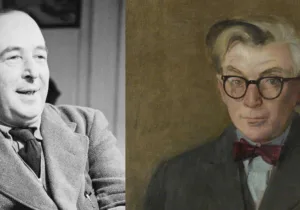“The essential element and guiding impulse of this tradition is the cooperative organization and reform of international order so as to protect and facilitate the security, welfare, and progress of liberal democracy—in short, make the world safe for democracy.”
John Ikenberry
In the decades that have passed since Francis Fukuyama published The End of History and the Last Man, the world has seen the rise of illiberal regimes and global crises that have struck at the heart of the post-World War II global order. With liberal internationalism fraying from internal and external challenges, many experts have questioned the long-term sustainability of this doctrine. In his book A World Safe for Democracy, John Ikenberry writes an impassioned defense of liberal internationalism and the international order it helped to create. He traces the development of this doctrine, the current situation in which it finds itself, and how it might evolve in the face of external threats, such as authoritarian China, and internal threats, such as populism. Along the way he addresses challenges from realists and revisionist critics of liberal internationalism. The book is already considered by many to be a masterpiece in defense of the doctrine, but it leaves the reader with many questions about the past and the future of liberal internationalism.
Ikenberry has developed a very clear formula for explaining the various aspects of liberal internationalism. He defines the term as the following: “It is a tradition of thought and action that seeks to organize and reform the international order in ways that strengthen and facilitate liberal democracy’s security, welfare, and progress.” He further breaks this down by explaining that while liberal internationalism has encompassed a wide range of opinions, it has consistently emphasized a couple key points. These points include international openness (in terms of trade and diplomacy), multilateral rules-based institutions, democratic solidarity and cooperative security, and progressive social purposes. Further, he acknowledges the unique historical and ideological combination of Western nation-states, liberal democracy, technological change, and Anglo-American hegemony that allowed for this ideology to come to prominence.
The book addresses both realist and revisionist critiques of liberal internationalism. While Ikenberry states he has not written the book as a battle between realism and liberalism, he does acknowledge them as intellectual rivals. The author defines realism as a school of thought that focuses on how a state copes with anarchy, while liberal internationalism focuses on the problems of modernity. Ikenberry clearly states this when he says, “Unlike realists, who see cycles of power and order across history, liberal internationalists are heirs of the Enlightenment project of scientific and technological advance and social transformation that open new possibilities for both progress and disaster.” In Ikenberry’s mind liberal internationalism is the solution to the political and social questions that arose in the wake of the modern world with its technological, social, and political revolutions.
After establishing and defining the key terms and parameters, Ikenberry proceeds to chart the historical course of liberal internationalism. Starting with its earliest foundations in the eighteenth and nineteenth centuries, he proceeds to the modern era. He spends a considerable amount of time on Woodrow Wilson and Franklin Roosevelt, who are in many ways the stars of this book. Charting internationalism’s course through Wilson’s idealistic visions and the chaos of the interwar years, he arrives at Franklin Roosevelt and World War II. He explores the intricacies of the post-war order that emerged in the Cold War and the crisis of contemporary internationalism. Ikenberry identifies the seeds that undermined the international order as the globalization of the liberal order following the end of the Cold War, “But the globalization of the liberal order was not really successful, and its failures have undermined that order’s governance foundations and eroded its legitimacy and social purpose.” He finishes the book by providing ideas about how the problems facing the international order might be overcome, supporting the revitalization of the doctrine under a pragmatic approach that unites the common interests of liberal democracies.
One of the strengths of the book is the author recognizes the ideologically complex reality of liberal internationalism. Not only does the author acknowledge that liberal internationalism theoreticians have held diverse views on what their doctrine should look like, but he also acknowledges that the real-world applications of this doctrine have been influenced by other external doctrines. For example, he discusses the complexity of the post-World War II order and explains how it was birthed out of a combination of liberal internationalism and realism. Additionally, the author addresses the complicated racial and imperial legacies associated with liberal internationalism. This is something he does honestly and skillfully, often addressing these ideological controversies directly.
However, despite the strong effort the author makes to address the ideological criticisms of liberal internationalism, the book often skirts historical issues. Lord Palmerston, British foreign secretary and prime minister in the 1800s who helped define liberal internationalism, is barely mentioned. Additionally, while Ikenberry does tackle modern events directly, such as the Iraq War, there is scant mention of problematic historical events relating to two of his key protagonists, Woodrow Willison and Franklin Roosevelt.
While the author does not shy away from discussing Wilson’s flaws, his racial views among them, he does not address the whole picture of the president. Take Wilson’s appeal that the world “be made safe for democracy.” Ikenberry defines this phrase in a way that is different from its popular understanding, claiming this is a plea for safety and not idealism. He writes, “Rather than an idealist appeal it is a call to reform the postwar international order to allow Western liberal democracy to survive,” and “he is calling on us to confront the dangers that imperil the survival of democracy, not promote it on distant shores.” Admirable sentiments, but the author does not square this definition of a world “made safe for democracy” declaration with Wilson’s interventions in Latin America and Wilson’s statement to British envoy William Tyrrell explaining his policy on Mexico as, “I am going to teach the South American republics to elect good men.” The author does not attempt to illustrate how these incidents are in line with his understanding of Wilson’s liberal internationalism or if they were the product of other influences upon Wilson. Instead, the book avoids these issues.
Additionally, despite his praise for Roosevelt’s liberal internationalism embodied in the Atlantic Charter and the global “universality” of Roosevelt’s Four Freedoms, he sidesteps many historical questions. How should the reader understand these aspects of liberal internationalism when compared to the United States’ recognition of the Soviet Union during the Holodomor or internment of Japanese, German, and Italian citizens during World War II? This might sound like nitpicking, but there seem to be enough historical gaps to warrant it. Also, even when tracing the history of an ideology, the actions of its major theoreticians and the degree these actions aligned with their ideologies are worth mentioning.
A reader’s ideological preferences will likely influence his or her opinion of Ikenberry’s book. Since the end of World War II, international openness, multilateral institutions, and democratic solidarity through cooperative security arrangements were generally considered bedrocks to modern diplomacy. Even realist critics would generally agree with the author’s assessment on the general soundness of these principles. Most nations would agree to these general principles with small alterations, depending upon unique national circumstances.
However, the author hits a bit of a snag when discussing the issue of progress. The book portrays the role of liberal democracy as moderately statist where the government plays a key role as an avatar of socioeconomic progress. But progress as defined by whom and to what end? Many of the economic and social reforms he praises would have mortified the liberal internationalists he quoted in previous chapters. One can only imagine what Alexis de Tocqueville, whom the author quotes and cites and who denounced the right to work and national workshops following the Revolution of 1848, would have thought of Roosevelt’s New Deal.
Beyond the historical implications, Ikenberry’s inclusion of progress raises policy questions about the role of government and the degree to which the state should be responsible for addressing these grievances. One wonders what degree of enthusiasm the author would have for the role of government if the liberal state’s vision of progress did not align with his own. In terms of foreign policy, it seems to leave the possibility that the world might continually chase the perceived harbingers of progress, namely the West. Should a democratic nation from the Middle East, Africa, or Asia whose policies generally support open trade, multilateral institutions, and collective security continue to be ostracized because its notions of progress do not align with the newest notions of progress held in Berlin, France, or Washington?
If the incoming Biden administration is contemplating the implications and applications of Ikenberry’s book, as reports suggest, then it will be up to its practitioners to turn the book’s philosophy into something that can be implemented abroad and understood by the American public at home. The administration would be wise to follow Ikenberry’s pragmatic, perhaps slightly realist, vision: “It must define itself as less a grand vision of a global march towards an ideal society, and more a pragmatic, reform-oriented approach to making democracies safe.” After all, humanity lives in a city of man and not the city of God. Heaven cannot be pulled down to earth.







 Live in the DC area? Sign-up for Providence's in-person events list!
Live in the DC area? Sign-up for Providence's in-person events list!